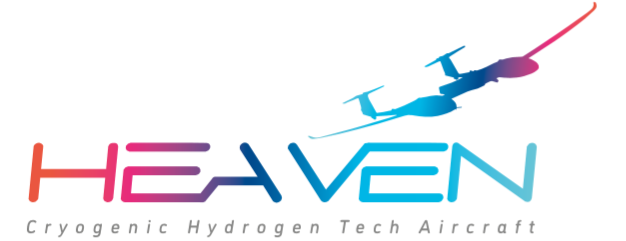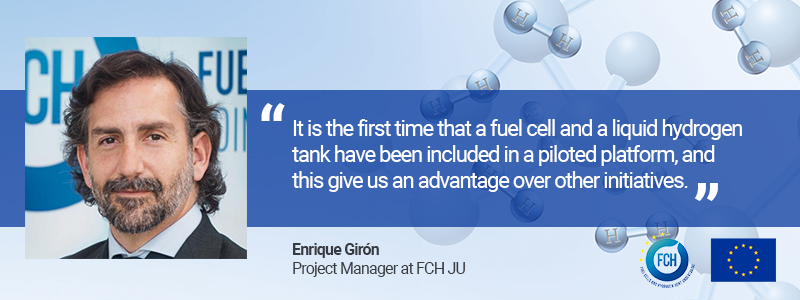Enrique Girón is project manager at FCH JU, a unique public-private partnership supporting research, technological development and demonstration activities in the field of fuel cells and hydrogen.
From a transport perspective, what is the European Commission’s strategy to effectively tackle the fight against climate change?
The European Commission has established a plan to decarbonize all transport by 2050, with gradual objectives. Aeronautics only has three alternatives: SAFs (low emission fuels), , e-fuels and hydrogen, each with a different problematic but only one with zero CO2 inflight emissions. Even with hydrogen, if you burn it, you produce NOx and the typical contrail seen behind airplanes. The best system under development is the fuel cell and hydrogen system, but this innovative and disruptive solution requires technologies that are not yet available with the required performances.
What projects are on the table that undertake this enormous task?
The EU, through two agencies, Clean Sky Joint Undertaking (CS JU) and Fuel Cells and Hydrogen Joint Undertaking (FCH JU), is clearly promoting these technologies. In Heaven a modular fuel cell that will adapt to aeronautical requirements in terms of power density is being developed; and it is one of the first attempts to include a liquid hydrogen tank in an airplane (the Hy4, designed by DLR, based on the Taurus G4, manufactured by Pipistrel). These two systems must be brought together to communicate, ensuring that the hydrogen arrives to the fuel cell at the correct flow, temperature and pressure. There are a lot of interfaces that need to work together. It is a first step towards reaching the goal of having a flight demonstrators for regional (short haul) aircraft by 2028. The study commissioned by CS JU and FCH JU showed that for airplanes of up to 1,000 km and 100 passengers, the liquid hydrogen and fuel cell combination could be used, and is economically comparable with other zero-emission alternatives. If the distance is greater, the use of fuel cells is more challenging and it will probably need to be combined with or replaced by hydrogen burning turbines.
In this context, what is the added value of projects like Heaven?
To my knowledge, it is the first time that a fuel cell and a liquid hydrogen tank have been combined in a piloted platform, and this gives us an advantage over other initiatives. There are other hydrogen aircraft under development but they all use compressed hydrogen and some combine it with internal combustion engines (e.j. ZeroAvia, from the USA). The goal of the EC is for all projects to have a commercial exploitation plan. Elringklinger develops the fuel cell and Air Liquide the hydrogen tank; hopefully they will be able to sell these developments in the future to aircraft manufacturers or to their suppliers.
Beyond aviation, what is the EC’s strategy to make transport a more sustainable industry?
Within the FCH JU program there is a very powerful project for light vehicles (H2ME) and city buses (JIVE). The following steps are being aimed at hydrogen trucks, which take advantage of the fuel cell and hydrogen for its better range performance and lower weight. There is also a commitment to the development of emission-free trains, so that when they leave the catenary they are propelled with fuel cells and hydrogen. Likewise, there are several maritime projects, where perhaps the more pressing question is whether to use pure hydrogen or combined with other elements such as ammonia or Liquid Organic Hydrogen Carriers (LOHC).

